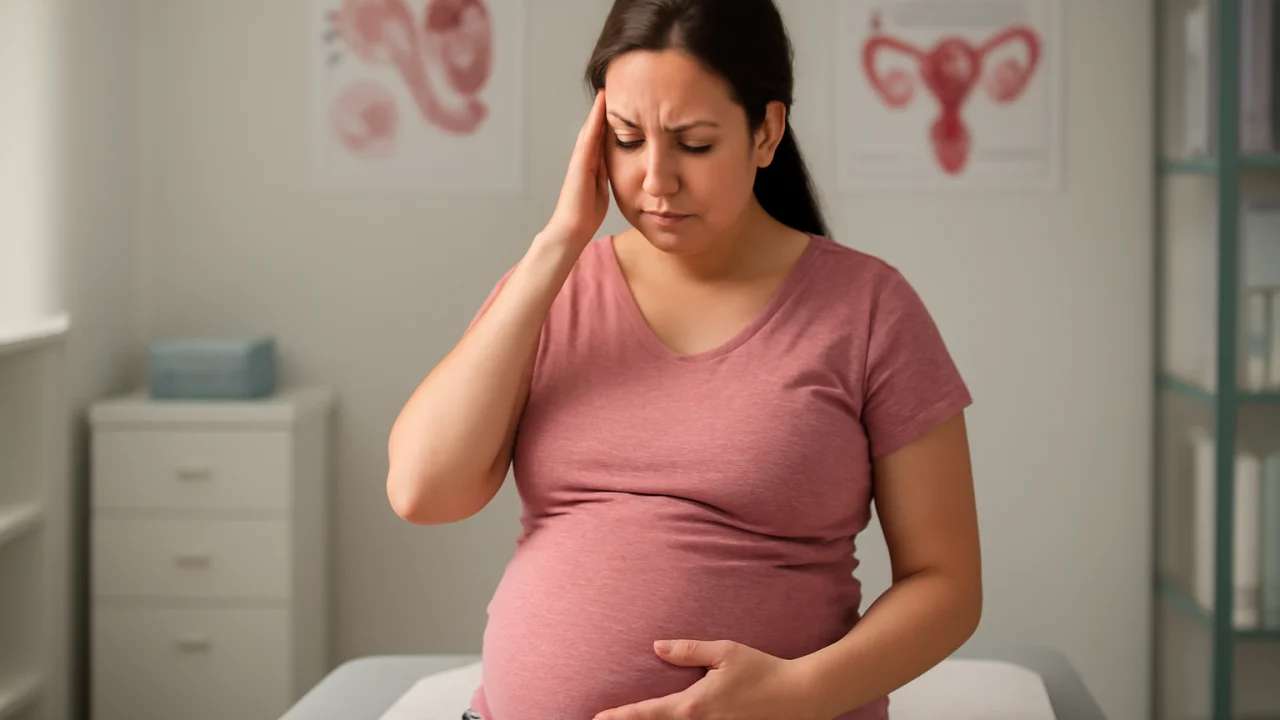
Understanding Common Women’s Health Conditions: Symptoms, Prevention, and Management
📑 Contents
Understanding Common Women’s Health Conditions: Symptoms, Prevention, and Management
Women’s health encompasses a wide range of conditions that can uniquely affect the female body throughout different life stages. From reproductive health issues to chronic diseases and hormonal disorders, understanding these common conditions is crucial for prevention, early detection, and effective management. This comprehensive guide covers the symptoms, risk factors, prevention strategies, and treatment options for some of the most prevalent women’s health conditions.
1. Reproductive Health Conditions

Menstrual Disorders
Irregular periods, heavy bleeding (menorrhagia), and painful periods (dysmenorrhea) are common menstrual disorders affecting women of reproductive age. These issues can impact daily life and may be a sign of underlying conditions such as polycystic ovary syndrome (PCOS) or endometriosis.
Polycystic Ovary Syndrome (PCOS)
PCOS is a hormonal disorder affecting up to 10% of women of reproductive age. Symptoms include irregular periods, excess hair growth, acne, and weight gain. PCOS can increase the risk of infertility, type 2 diabetes, and heart disease.
Endometriosis
Endometriosis occurs when tissue similar to the uterine lining grows outside the uterus, causing pain, heavy periods, and sometimes infertility. Early diagnosis and management can help reduce symptoms and improve quality of life.
2. Pregnancy-Related Conditions

Pregnancy brings unique health challenges. Some women may experience complications that require medical attention, such as:
- Gestational diabetes: High blood sugar during pregnancy, which increases the risk of developing type 2 diabetes later.
- Preeclampsia: High blood pressure and organ damage, usually after the 20th week of pregnancy.
- Preterm labor: Labor that begins before 37 weeks of pregnancy, potentially leading to complications for the baby.
Regular prenatal care, healthy eating, and managing chronic conditions can help reduce the risk of pregnancy-related complications.
3. Chronic Diseases Affecting Women

Osteoporosis
Women are at a higher risk of osteoporosis, especially after menopause. This condition weakens bones and increases fracture risk. Calcium and vitamin D intake, regular weight-bearing exercise, and avoiding smoking or excessive alcohol can help maintain bone health.
Heart Disease
Although commonly seen as a men’s issue, heart disease is the leading cause of death among women. Symptoms in women can be atypical, such as shortness of breath, fatigue, or nausea, rather than classic chest pain. Risk factors include high blood pressure, high cholesterol, diabetes, smoking, and family history.
4. Gynecological Cancers
Gynecological cancers include cervical, ovarian, and uterine cancers. Early detection through screening and awareness of symptoms is key.
| Cancer Type | Common Symptoms | Screening/Detection | Prevention |
|---|---|---|---|
| Cervical Cancer | Abnormal bleeding, pelvic pain, unusual discharge | Pap smear, HPV testing | HPV vaccination, regular screenings |
| Ovarian Cancer | Bloating, abdominal pain, changes in urination | Pelvic exam, imaging, CA-125 blood test | Genetic counseling, awareness of family history |
| Uterine (Endometrial) Cancer | Postmenopausal bleeding, pelvic pain | Endometrial biopsy, ultrasound | Manage risk factors (obesity, hormone therapy) |
5. Hormonal and Autoimmune Disorders
Thyroid Disorders
Women are more likely than men to develop thyroid disorders, such as hypothyroidism and hyperthyroidism. Symptoms include fatigue, weight changes, mood swings, and changes in hair or skin. Untreated thyroid disorders can affect fertility and pregnancy outcomes.
Autoimmune Diseases
Autoimmune diseases like lupus, rheumatoid arthritis, and multiple sclerosis disproportionately affect women. These conditions occur when the immune system attacks the body’s own tissues, leading to inflammation, pain, and organ damage.
6. Mental Health and Wellbeing
Women are more likely to experience certain mental health conditions, including depression and anxiety. Factors such as hormonal changes, reproductive health issues, and societal pressures can contribute to mental health challenges.
- Postpartum depression: Affects up to 1 in 7 women after childbirth.
- Premenstrual dysphoric disorder (PMDD): A severe form of premenstrual syndrome with significant mood disturbances.
Mental health is as important as physical health. Seeking support, therapy, and self-care strategies can make a significant difference.
7. Prevention and Healthy Lifestyle Tips
Adopting a healthy lifestyle can reduce the risk of many women’s health conditions. Here are practical tips:
- Maintain a balanced diet rich in fruits, vegetables, whole grains, and lean proteins.
- Engage in regular physical activity—aim for at least 150 minutes of moderate exercise per week.
- Get regular health screenings (Pap smears, mammograms, blood pressure checks, etc.).
- Practice safe sex to reduce the risk of sexually transmitted infections (STIs).
- Limit alcohol consumption and avoid smoking.
- Manage stress through mindfulness, yoga, or hobbies.
- Prioritize sleep and maintain a consistent sleep schedule.
8. When to See a Healthcare Provider
Early detection is crucial for effective treatment and better outcomes. See a healthcare provider if you experience:
- Unusual vaginal bleeding or discharge
- Persistent pelvic or abdominal pain
- Changes in menstrual cycle patterns
- Unexplained weight changes
- Chronic fatigue, mood changes, or sleep disturbances
- Any new lump, growth, or skin change
Regular checkups and open communication with your healthcare provider can help address concerns early and maintain optimal health.
Frequently Asked Questions
What are the most common women’s health conditions?
The most common women’s health conditions include menstrual disorders, polycystic ovary syndrome (PCOS), endometriosis, osteoporosis, heart disease, thyroid disorders, gynecological cancers, and mental health issues like depression and anxiety.
How often should women get health screenings?
Screening frequency depends on age and risk factors. Generally, women should have:
- Pap smears every 3 years starting at age 21
- Mammograms every 1–2 years starting at age 40–50
- Annual blood pressure and cholesterol checks
- Bone density testing after menopause
Always consult your healthcare provider for personalized recommendations.
Can lifestyle changes really prevent women’s health conditions?
Yes. Healthy habits—such as balanced nutrition, regular exercise, not smoking, and managing stress—can significantly reduce the risk of many chronic diseases and reproductive health issues.
What are warning signs that should not be ignored?
Seek medical attention if you experience abnormal bleeding, unexplained pain, sudden weight changes, persistent fatigue, or any new or unusual symptoms.
Are there support groups for women dealing with these conditions?
Yes. Many organizations and online communities offer support for women with specific health conditions, such as PCOS, endometriosis, cancer, and mental health challenges. Your healthcare provider can recommend reputable resources.
Summary
Women’s health conditions are varied and can impact physical, emotional, and mental wellbeing. Understanding common conditions, recognizing symptoms, and adopting preventive strategies are key to maintaining lifelong health. Regular checkups, healthy lifestyle choices, and timely intervention can empower women to take control of their health and lead fulfilling lives.











